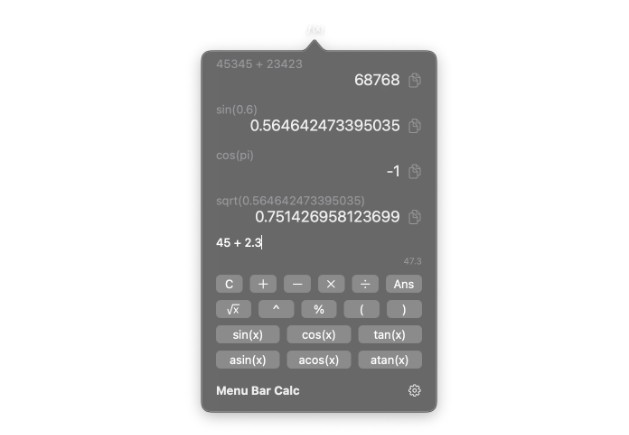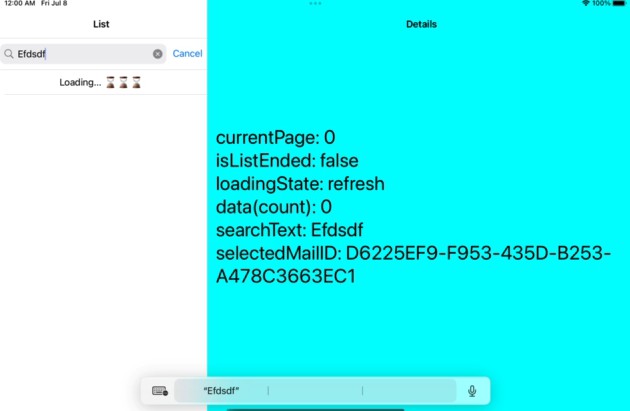ReduxStore
Redux Architecture Library
Installation
https://github.com/paigeshin/SwiftReduxStore
Version Support
iOS 13++
macOS 10_15_5
Sample Projects
What is Redux Architecture?
Declarative Framework has a lot of nested views by its nature. It’s cumbersome whenever you have to pass state argument. Your code base becomes easily nasty.
So Redux Architecture has come to a rescue by leveraring AppState Concept. Instead of Local State in each view, you can manage global state. You don’t ever need to pass arguments to the nested views. It will be managed by ReduxStore from this library.
Simple Redux Usage – Counter Example
States
struct AppState: ReduxState {
var countState: CountState = CountState()
}
struct CountState {
var count: Int = 0
}
AppState must contain all states you need in your project.
Because I’m building Counter App, I defined CounterState here.
AppState has CounterState as its property.
Actions
struct Increment: Action {}
struct Decrement: Action {}
Each of your state has actions to change its state. In this example, you only have two actions. Increment count, Decrement Count.
Reducers
func appReducer(_ state: AppState, _ action: Action) -> AppState {
var state: AppState = state
state.countState = counterReducer(state.countState, action)
return state
}
func counterReducer(_ state: CountState, _ action: Action) -> CountState {
var state: CountState = state
switch action {
case _ as Increment:
state.count += 1
case _ as Decrement:
state.count -= 1
default:
return state
}
return state
}
Reducer is where actual modifications on states happen.
appReducer must contain all reducers which modify states.
counterReduer handles all the logics related with CounterState.
Initialize Your Store
import SwiftUI
import ReduxStore
@main
struct TestApp: App {
@StateObject private var store: Store = Store(reducer: appReducer, state: AppState(), middlewares: [])
var body: some Scene {
WindowGroup {
ContentView()
.environmentObject(store)
}
}
}
On your root view initialize store with appReducer and AppState().
Map ReduxStore with Props on view.
import SwiftUI
import ReduxStore
struct ContentView: View {
@EnvironmentObject var store: Store<AppState>
private struct Props {
let increment: () -> Void
let decrement: () -> Void
let count: Int
}
private func map() -> Props {
Props(
increment: {store.dispatch(action: Increment())},
decrement: {store.dispatch(action: Decrement())},
count: store.state.countState.count
)
}
var body: some View {
let props: Props = map()
VStack {
Text("\(props.count)")
Button {
props.increment()
} label: {
Text("Increment")
}
Button {
props.decrement()
} label: {
Text("Decrement")
}
}
}
}
You can directly use store.dispatch(action: Increment()) without mapping. It’s your choice.
Your counter app is done now!.
Middleware
Create Middleware
func logMiddleware() -> Middleware<AppState> {
return { state, action, dispatch in
print("LOG MIDDLEWARE")
}
}
Middleware is called whenever actions from reducer are taken. I created logMiddleware() to keep following all the actions in my project.
Attach Middleware
@main
struct TestApp: App {
@StateObject private var store: Store = Store(reducer: appReducer, state: AppState(), middlewares: [
logMiddleware()
])
var body: some Scene {
WindowGroup {
ContentView()
.environmentObject(store)
}
}
}
You can attach middleware when you initialize store.
Asynchronous Task
Define your middleware
struct IncrementAsync: Action { }
func incrementMiddleware() -> Middleware<AppState> {
return { state, action, dispatch in
switch action {
case _ as IncrementAsync:
DispatchQueue.main.asyncAfter(deadline: .now() + 2.0) {
dispatch(Increment())
}
default:
break
}
}
}
Asynchronous Task is achieved by Middleware. Network calls are handled by middlewares.
Attach it on your root view
@main
struct TestApp: App {
@StateObject private var store: Store = Store(reducer: appReducer, state: AppState(), middlewares: [
logMiddleware(),
incrementMiddleware()
])
var body: some Scene {
WindowGroup {
ContentView()
.environmentObject(store)
}
}
}
Provide your middleware.
Use it on view
struct ContentView: View {
@EnvironmentObject var store: Store<AppState>
private struct Props {
let increment: () -> Void
let decrement: () -> Void
let incrementAsync: () -> Void
let count: Int
}
private func map() -> Props {
Props(
increment: {store.dispatch(action: Increment())},
decrement: {store.dispatch(action: Decrement())},
incrementAsync: {store.dispatch(action: IncrementAsync())},
count: store.state.countState.count
)
}
var body: some View {
let props: Props = map()
VStack {
Text("\(props.count)")
Button {
props.incrementAsync()
} label: {
Text("Increment Async")
}
Button {
props.increment()
} label: {
Text("Increment")
}
Button {
props.decrement()
} label: {
Text("Decrement")
}
}
}
}
Through Async Action you defined, you can now handle asynchronous task in your project.

